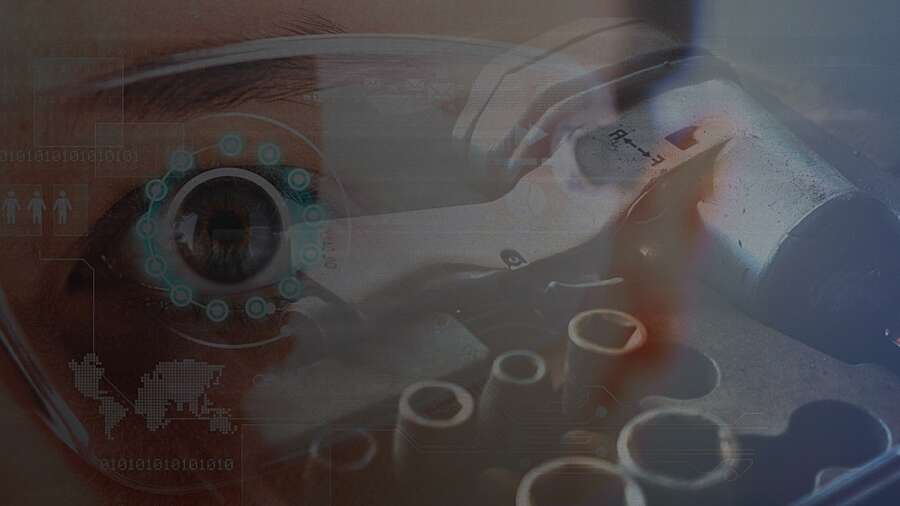A Practical IoT Use Case: Smart Asset Management and Heads Up Displays for Industrial Manufacturers
Lost time. Lost resources. Lost opportunity. These three themes characterize the major sources of waste in any manufacturing site that does not use smart asset management tracking.
Many complex industrial environments are seeing diminished returns from their lean manufacturing efforts and now have a ready opportunity for improvement through next-generation asset tracking.
Here’s what typically happens. Technicians spend their mornings standing in tool check-out lines waiting for supervisors and managers to count and record each instrument leaving a tool zone. Technicians then come back to even longer lines to check their tools back in before going home. Some technicians cut out of their shifts early to beat the lines. Others must return to the assembly line to find tools they misplaced.
And when an expensive tool goes missing, production lines must be shut down or shipment to the end customer may be delayed until the tool is found.
It’s time to empower your managers, supervisors and technicians with a smart asset management tracking system, enabled by next-generation radio frequency identification (RFID) and the Internet of Things (IoT). Replace manual efforts of counting tools with automated check-out and check-in. Facilitate seamless personnel and resource tracking. Combine manager intuition with real-time productivity metric insights. Smart asset management tracking is about redefining these routine managerial tasks.
By reducing the time companies spend on inventory management, next-generation RFID lets companies spend less time thinking about minimizing cost and more time concentrating on maximizing productivity. No lines. Less lost tools. More product produced.
The Difference Maker: Next-Generation RFID Technology
RFID technology uses electromagnetic fields to automatically identify and track tags attached to objects. There are two RFID types: active and passive. Active RFID tags are expensive but offer real-time location and wide area visibility of objects. If an active RFID were placed on something like a forklift, managers could look at their computer screen and see where it is in the factory. In contrast, passive RFID tags are inexpensive but offer limited read range and ‘last seen’ knowledge. If you put a passive RFID on the same forklift, you could only see where it was the last time it was in read range of an antenna.
Next-generation hybrid RFID fusion technology, powered by PTC’s ThingWorx, allows the marriage of passive and active RFID.
Here’s how it works.
A technician collects his passively tagged tools from the tool zone. As tools leave the table, the system marks those tools as ‘absent.’ When the technician exits the tool zone through the checkout area, the passive RFID antenna configured for checkout reads all the tools he is carrying, and the checkout area’s active tag antenna reads the technician’s ID active tag.
At that moment, ThingWorx fuses the information, effectively checking out the tools to the employee. Since the active RFID system tracks technicians in real-time, companies can also track tools assigned to them throughout the workday.
The Groundbreaker: Practical IoT Meets a Head Mounted Tablet
By partnering with RealWear, we’ve taken the ease of use and efficiency to another level. With RealWear’s head mounted tablet specifically for use in industrial environments, technicians can see maintenance procedures, assembly instructions, and live feedback of smart connected tools – completely hands free and voice activated. This technology could even tell a forklift driver where to pick up, move and place machinery with hands free instructions.
Layering in augmented reality (AR) technology like ThingWorx Studio could enable more realistic work instructions. And as technicians have more depth and motion sensors at their disposal in the industrial environment, they’ll be able to improve accuracy and speed.
From implementation onward, the ThingWorx platform will store and be the active hub for all data generated on the shop floor. Future business decisions will then flow from ThingWorx Analytics, which allows users to identify patterns and anomalies, predict outcomes, and automate optimal solutions. Taking it a step further, ThingWorx-enabled data management capabilities will enable integrations with enterprise resource planning (ERP), operation equipment effectiveness (OEE) and management execution systems (MES), allowing users to quickly analyze data from multiple sources.
Think Forward. Act Now.
If your business goals include reducing operational costs and improving decision making, now is the time to take your next step to a smarter factory. Reap the benefits of next generation RFID capabilities by tracking resources, processes and productivity in real time. Equip your workforce with head mounted tablets that create safer, more productive industrial environments. Substitute time spent tracking tools with time spent analyzing metrics enabled by ThingWorx data management. Replace wasted time, resources and opportunity with an investment in the future.
Accelerate innovation results in a digital world. Think forward. Act now.


